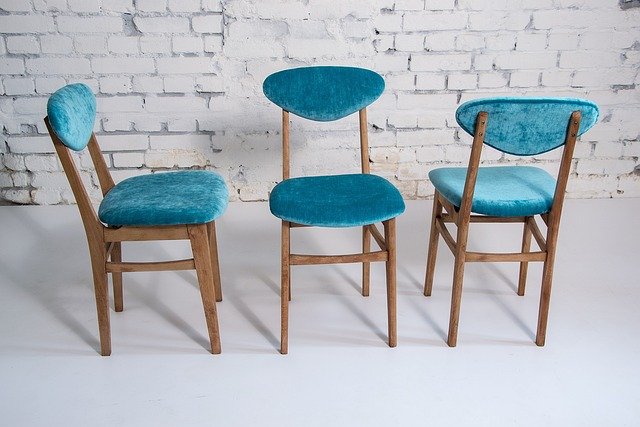The Art of Mismatched Dining Chairs: A Fresh Approach
The dining room has long been a bastion of formality and tradition, with matching chairs neatly arranged around a table. However, a new trend is challenging this convention and bringing a fresh, eclectic energy to dining spaces. Mismatched dining chairs have emerged as a bold design choice, allowing homeowners to express their personality and create a more relaxed, inviting atmosphere. This approach combines different styles, colors, and materials to craft a unique seating arrangement that tells a story. Far from appearing haphazard, a well-curated collection of mismatched chairs can elevate a dining room's aesthetic, turning it into a conversation piece and a reflection of the homeowner's individual taste.

Origins of the Mismatched Chair Trend
The concept of mismatched dining chairs isn’t entirely new. It has roots in the makeshift seating arrangements of large family gatherings, where extra chairs were pulled from various rooms to accommodate guests. This practical solution inadvertently created an eclectic mix that many found charming. In the world of design, the trend gained traction in the early 2000s as part of the broader movement towards more personalized, less rigid interiors. Influenced by the bohemian and shabby chic aesthetics, designers began to experiment with mixing different chair styles to create more dynamic dining spaces.
Benefits of Embracing Mismatched Chairs
One of the primary advantages of adopting mismatched dining chairs is the flexibility it offers. Homeowners can gradually build their collection over time, adding pieces that catch their eye without the pressure of finding an exact match to existing chairs. This approach also allows for easy updates to the dining room’s look by simply swapping out one or two chairs, rather than replacing an entire set. Additionally, mismatched chairs can make a space feel more lived-in and welcoming, encouraging guests to linger longer at the table.
Strategies for Successful Mixing
While the mismatched chair trend encourages creativity, there are some strategies to ensure the result is cohesive rather than chaotic. One approach is to choose chairs with a common element, such as color or material. For example, a set of chairs in different styles but all painted white can create a unified look. Another method is to select chairs from the same era or design movement, such as mid-century modern pieces, which will share similar lines and proportions despite variations in form.
Balancing Act: Mixing Materials and Textures
One of the most exciting aspects of mismatched dining chairs is the opportunity to play with different materials and textures. Combining wood, metal, plastic, and upholstered chairs can add depth and interest to a dining space. However, it’s important to strike a balance to avoid overwhelming the senses. A good rule of thumb is to limit the mix to three or four different materials. For example, pairing sleek metal chairs with rustic wooden ones and adding a couple of upholstered seats can create a harmonious blend of textures.
Color Coordination in Mismatched Settings
Color plays a crucial role in tying together a mismatched dining chair arrangement. One effective approach is to choose chairs in different shades of the same color family, creating an ombré effect around the table. Alternatively, selecting chairs in complementary colors can create a vibrant, energetic atmosphere. For those who prefer a more subdued look, using chairs in neutral tones with one or two accent colors can provide visual interest without overwhelming the space.
Incorporating Vintage and Modern Pieces
The mismatched chair trend offers an excellent opportunity to blend vintage and modern design elements. Pairing a set of antique wooden chairs with sleek, contemporary acrylic seats can create a striking contrast that highlights the best features of both styles. This approach not only adds character to the dining room but also allows homeowners to incorporate family heirlooms or flea market finds alongside newer acquisitions.
The Role of the Dining Table
When working with mismatched chairs, the dining table becomes an anchor that ties the diverse elements together. A simple, streamlined table can provide a neutral backdrop for more eclectic chair choices, while a statement table might call for chairs that complement its style without competing for attention. The table’s shape can also influence the chair arrangement; a round table, for instance, can make it easier to integrate different chair heights and styles.
Mismatched Chairs in Different Design Styles
The beauty of the mismatched chair trend is its adaptability to various design aesthetics. In a farmhouse-style dining room, mixing Windsor chairs with ladder-back designs and a church pew can enhance the rustic charm. For a more modern space, combining molded plastic chairs in different colors with metal industrial stools can create a dynamic, contemporary look. Even traditional dining rooms can benefit from subtle mismatching, such as using chairs with the same frame but different upholstery fabrics.
Maintaining Visual Harmony
While the goal of mismatched dining chairs is to create an eclectic look, it’s important to maintain a sense of visual harmony to prevent the space from feeling chaotic. One way to achieve this is by ensuring that the chairs are proportionate to each other and the table. Another technique is to create a rhythmic arrangement by alternating different styles or colors around the table. Additionally, using a cohesive set of table linens, placemats, or a statement light fixture can help unify the diverse elements.
In conclusion, the trend of mismatched dining chairs offers a refreshing departure from traditional dining room design, allowing for greater personalization and creativity. By thoughtfully combining different styles, materials, and colors, homeowners can create a unique and inviting dining space that reflects their individual taste and tells a story. Whether embracing bold contrasts or subtle variations, the key to success lies in finding the right balance between diversity and cohesion. As this trend continues to evolve, it promises to transform dining rooms into more dynamic, expressive spaces that celebrate the art of gathering around the table.






